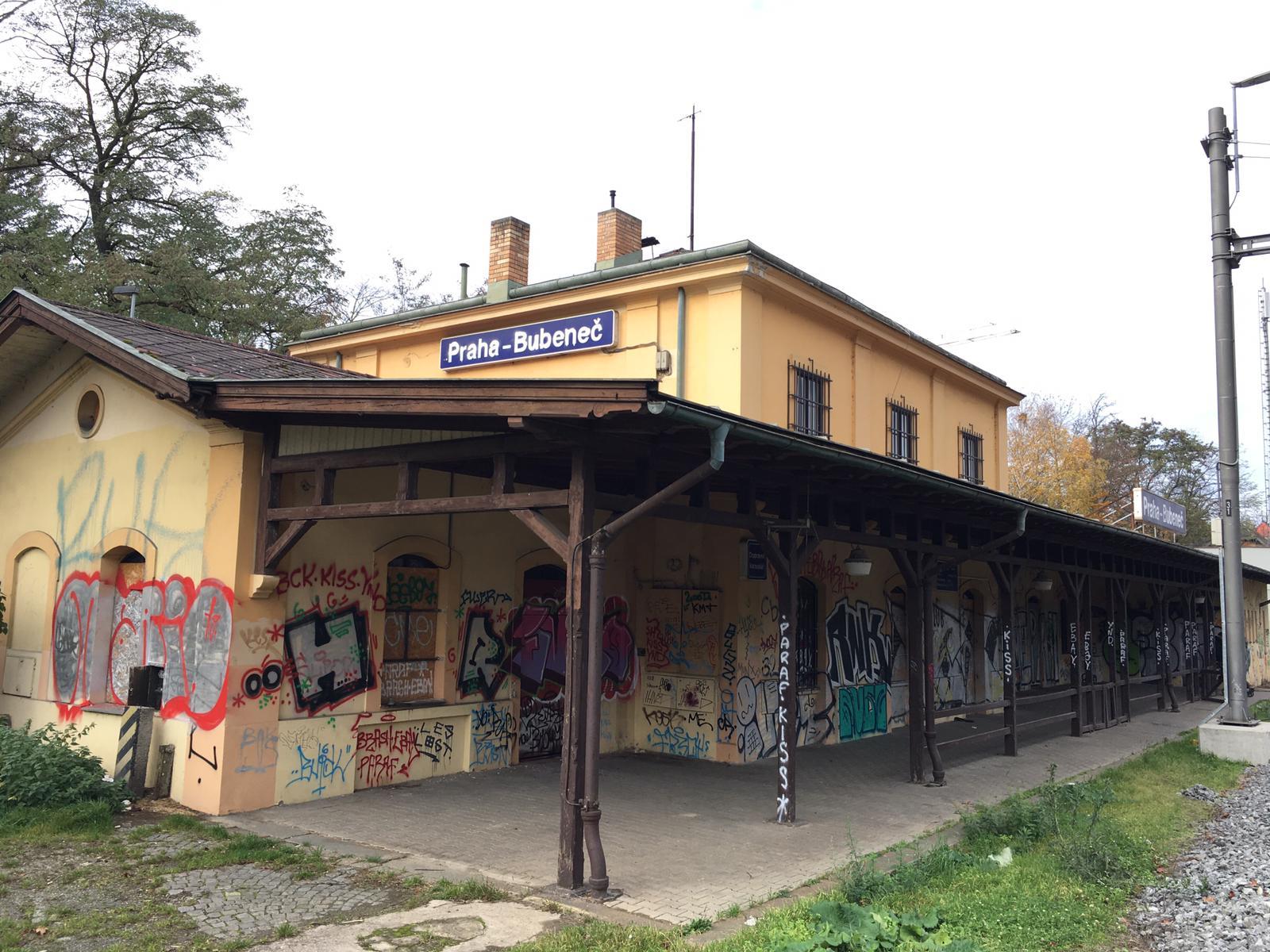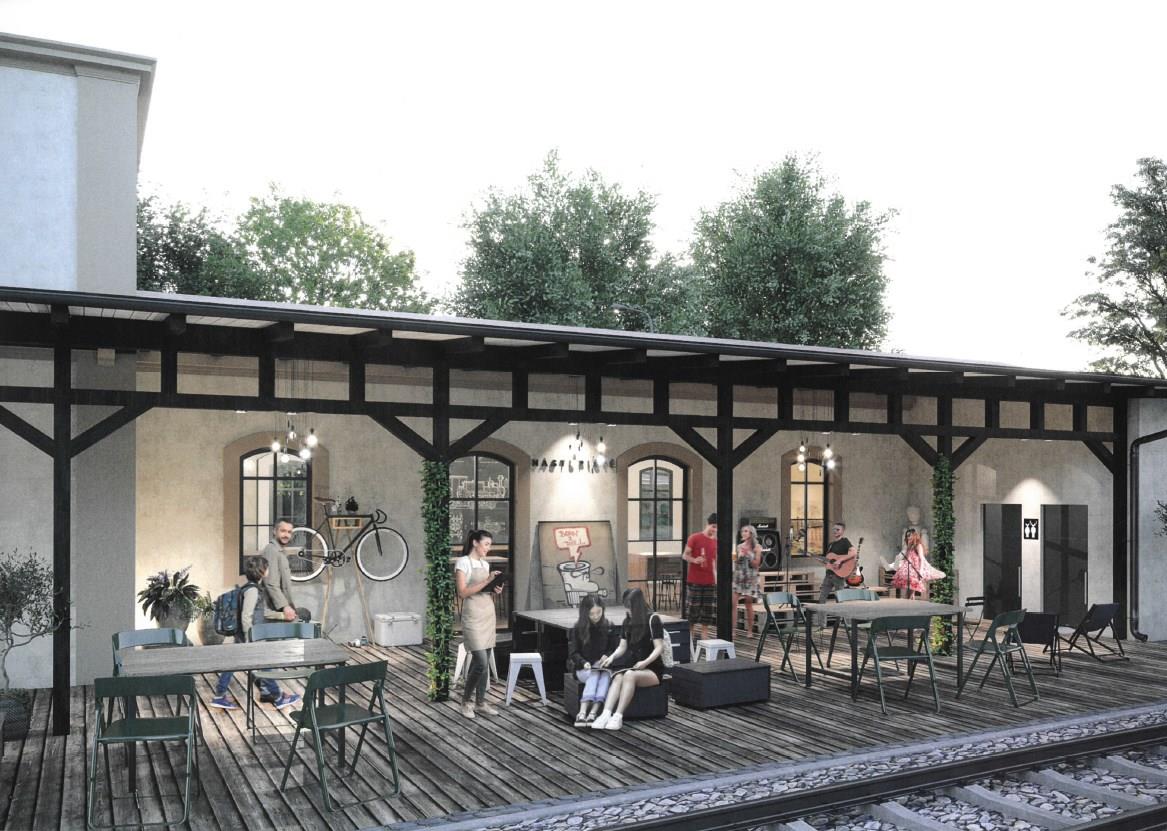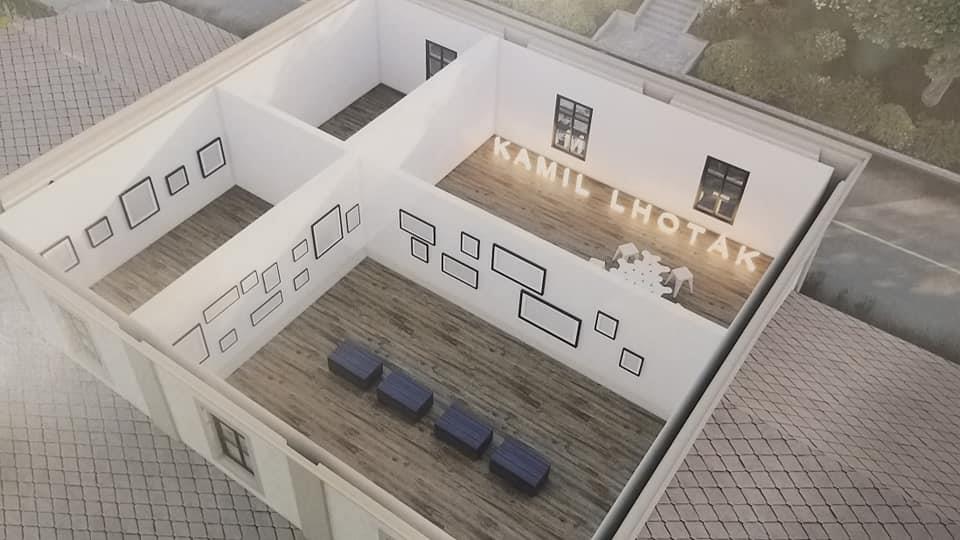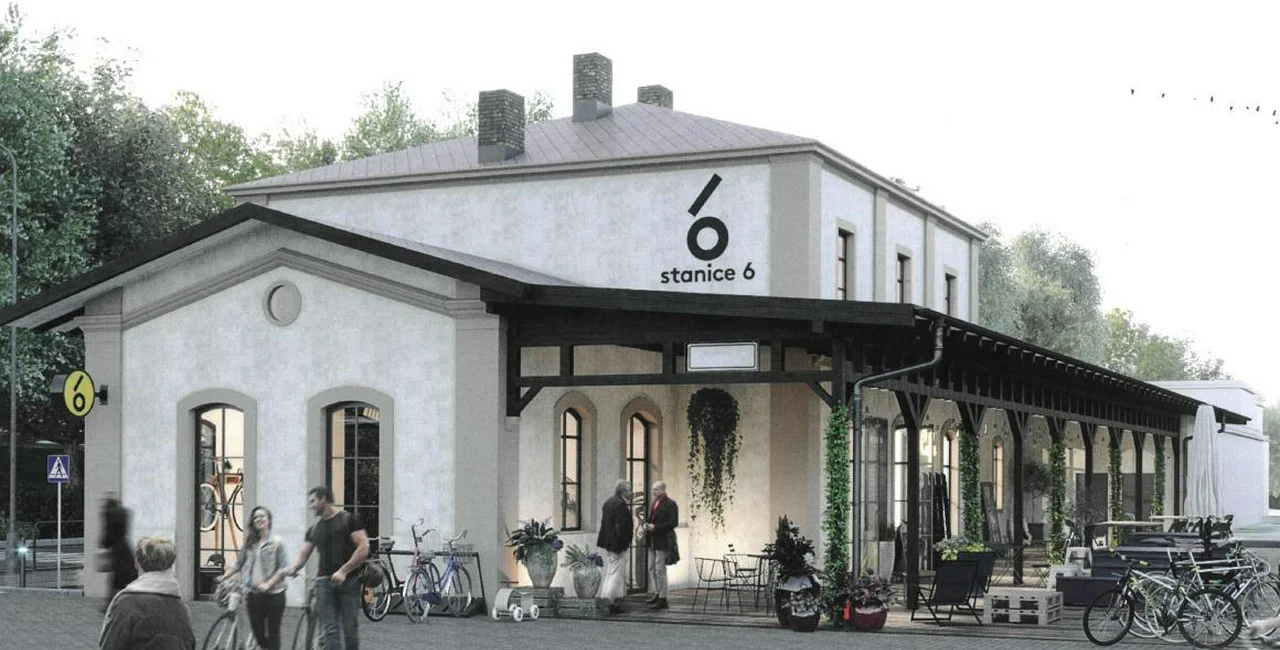The future of the former railway station in Bubeneč in Prague 6 is becoming clearer. Construction on a new community center called Stanice 6 should begin in spring 2021 and be completed in a year.
The former Nádraží Praha-Bubeneč should become a “pulsating space full of inspiration and movement” with a gallery, bistro with a cafe, cultural hall, community center, and spaces for concerts and for sports. The station is located on Goetheho street, not far from Sibiřské náměstí in Prague 6. It is not to be confused with the Praha-Bubny station in Prague 7–Holešovice, which is also getting renovated.
PARTNER ARTICLE
The Bubeneč station shut down on August 28, 2014, due to the opening of a new station nearby that served the same area. It has been mostly empty since, subject to vandalism and graffiti. The Prague 6 district in November 2019 chose a revitalization proposal by Richard Preisler, Martin Kontra and Martin Krb from among 50 applicants. These same three people are behind the successful project Bajkazyl as well as Fuchs 2, Bike Jesus, the wine bar Dvojka and the art gallery Šachta.

“We were inspired by similar spaces around the world and concluded that the future of cities is connecting previously unthinkable activities. We also want this location to be returned to the people of Prague,” Preisler, who will be in charge of strategic leadership and communication, told the Czech daily Blesk.
Before it closed, the station had a pub that was popular with the local community. The revived Stanice 6 will also offer refreshments, but in a different atmosphere. The new bistro and cafe will seek to reduce its environmental impact by following the current trend for local goods.
“We mainly want to place emphasis on local raw materials and products in order to reduce the burden on the planet from unnecessary traffic. Visitors can therefore look forward to coffee from local roasters, local juices, beer from small breweries, and appetizers made from Czech ingredients,” Preisler said.

The station’s central space will become a multifunctional hall for concerts, theater performances or slam poetry. “We will offer a program that will primarily map the domestic, but also the European alternative scene. Acoustic music projects, experimental electronics, film documentaries or guest theater projects will have their place here. At all events, we will emphasize that they do not bother the surrounding residents,” Preisler said.
The first floor should be used as a gallery. The new tenants want to exhibit artists who were or are somehow connected with Prague 6 such as self-taught 20th century graphic artist Kamil Lhoták, writer Petr Šabach and scientist Antonín Holý, who helped develop antiretroviral drugs. The new generation of artists and cultural figures will also be represented.
The station is near the western edge of Stromovka park. Skate and bike rentals will be available. There will also be a bicycle repair shop with basic tools. Preisler has been behind similar bike repair spots cross the city.
Prague purchased the station building from Railway Administration (SŽDC) at the start of 2019 and entrusted it to the Prague 6 district. The district then met with local residents to determine what they wanted done with the structure. A bistro and cultural venue were among the top suggestions.

Choosing who would transform the space was not easy. “Out of 50 registered participants, five very high-quality projects reached the finals. For me personally, the selection of the best of them was very difficult,” Prague 6 Deputy Mayor Jan Lacina (STAN) said in November when the winner was announced.
Lacina dded that this would be the first successful transformation of a station into a cultural center in Prague. He pointed to the example of the station in Vyšehrad, which despite 30 years of efforts has fallen into ruins. “We want to be enlightened from that,” he said.
Other applicants for the Bubeneč station included the Forman Brothers, who proposed a theater with the slogan “a station where life returns, even if trains no longer stop there.” Their proposal came in fourth place.
The district will lease the former railway station for 10 years, and the new operator will pay only 100,000 CZK a year. The district will renovate the building, but all the new equipment must be provided by the new tenant, and the entire space has to be used.
Nádraží Praha-Bubeneč is classified as an unmovable cultural monument. It was built in 1850 and is the second oldest railway station building in Prague after Masarykovo nádraží, from 1845. (Part of the original Praha-Dejvice station from 1831 is also standing, but the current Dejvice station building is from 1873.)
Trains that used to stop at Nádraží Praha-Bubeneč now stop some 850 meters northwest at the new Praha-Podbaba station, which offers better integration with Prague’s tram and bus network.












 Reading time: 4 minutes
Reading time: 4 minutes 
























